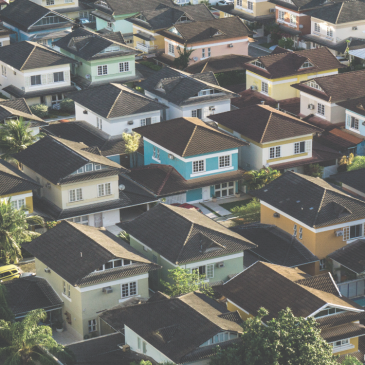Neighborhoods in the United States are frequently racially segregated. As a result of racial segregation, cities and businesses have disinvested in Black, urban neighborhoods, which has led to the buildings in these neighborhoods deteriorating. Dilapidated, deteriorating, and abandoned buildings pose numerous health risks to the people that live near them. Not only are there risks associated with the building itself, as when animals using the buildings as living space carry disease, but abandoned buildings in urban environments are often used as storage areas for weapons and places that enable drug trafficking and use. This week, STASH reviews a study by Eugenia South and colleagues that assessed the effectiveness of a housing remediation1 on outcomes related to (1) gun violence, (2) substance use, and (3) perceived neighborhood safety.
What were the research questions?
How will a neighborhood-based housing remediation intervention influence outcomes related to gun violence, substance use, and perceived safety?
What did the researchers do?
The researchers conducted a clustered randomized controlled trial throughout the city of Philadelphia, Pennsylvania. Before conducting the study, the researchers compiled a list of all of the abandoned houses throughout the city2. The researchers selected a total of 258 houses, ensuring that each was a set distance from one another so that there was no overlap between any of the clusters. After creating the clusters, the researchers randomly assigned each of them to one of the three study groups: (1) the full remediation group (which involved restoring missing doors and windows and removing trash); (2) the trash removal group (missing doors and windows were not restored); and (3) the no-intervention control group. Afterwards, people living in close proximity to the abandoned houses were administered surveys to ask about outcomes related to gun violence, substance use, and neighborhood safety. In total, they surveyed 301 participants before conducting the intervention and were able to retain 172 of these participants for a post-intervention assessment.
What did they find?
Participants in the full remediation cluster reported that weapon violations decreased by 8.43% and gun assaults by 13.12%. These decreases were bigger than those reported by the control group. On the other hand, they did not notice a drop in shootings. The trash removal group without remediation did not report any improvements in gun violence. Neither the full remediation group nor the trash removal group reported improvements in illegal substance use or perceived neighborhood safety. There was no evidence that gun violence was displaced into areas nearby the intervention sites.

Figure. This figure depicts the total number of weapon violations, gun assaults, shootings, illegal substance use incidence, and public intoxication incidence in areas that were near the abandoned houses that were a part of the study. Total counts are provided per intervention group and by the pre- and post-test assessments. Click image to enlarge.
Why do these findings matter?
While abandoned housing remediation did not affect outcomes related to substance use or perceived neighborhood safety, it did decrease the number of gun assaults and weapon violation incidences that occurred in surrounding neighborhoods. Importantly, there was no evidence that gun violence was displaced into nearby areas. Gun violence presents a significant threat to public health in the US. For instance, 48,830 people died in the US from gun-related injuries in 2021. Further, at the time this article was written, the US witnessed over 400 mass shootings just in 2023. While abandoned housing remediation certainly is not a panacea to the threat of gun violence in the US, the results of this study suggest that it could be an effective strategy for reducing the amount of gun violence in cities while improving the health and safety of those living nearby abandoned houses.
Every study has limitations. What are the limitations in this study?
The study was conducted in several neighborhoods in Philadelphia. Consequently, the study cannot be generalized to other areas of the country. More research is needed to determine whether the results of the study will replicate in other cities throughout the United States, as well as in more rural areas. In addition, the groups included in the study had different proportions of Black and non-Black residents. As a result, the outcomes across study groups may have differed from one another due to differences in participants’ racial demographics.
For more information:
Community Voices in Recovery is a free, online course for allied health professionals who want to improve racial and health equity in addiction care. If you are worried that you or someone you know is experiencing addiction, the SAMHSA National Helpline is a free treatment and information service available 24/7. For more details about addiction, visit our Addiction Resources page.
— Seth McCullock, PhD
What do you think? Please use the comment link below to provide feedback on this article.
________________
1. Housing remediation is the process of systematically cleaning and restoring a building to remove contaminants from an affected area.
2. Specifically, they compiled a list of houses that violated the city’s Doors and Windows ordinance.




